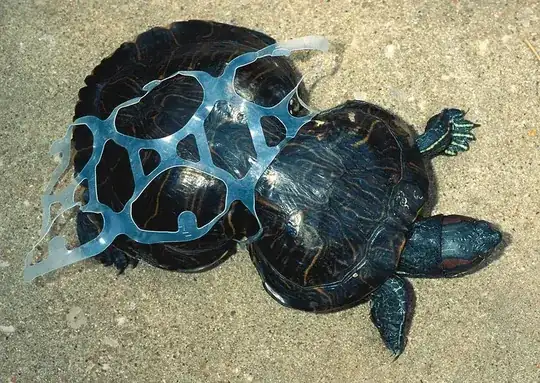There has been discussion on the Snopes forums regarding the second image. In the link, they discussed the case of Peanut the tortoise, which appears to be the same tortoise depicted in the first link. Therefore, at least the first image is authentic, and tortoises can certainly be deformed by plastic rings.
According to the Minnesota Department of Natural Resources quoting the Missouri Department of Conservation, the first photo is an authentic image.
This is Peanut the turtle—Peanut the red-eared slider, to be exact.
She was found in 1993 in Missouri and taken to a zoo in St. Louis
where the six-pack ring was removed.
Today she is in the care of the Missouri Department of Conservation,
and is doing well.

